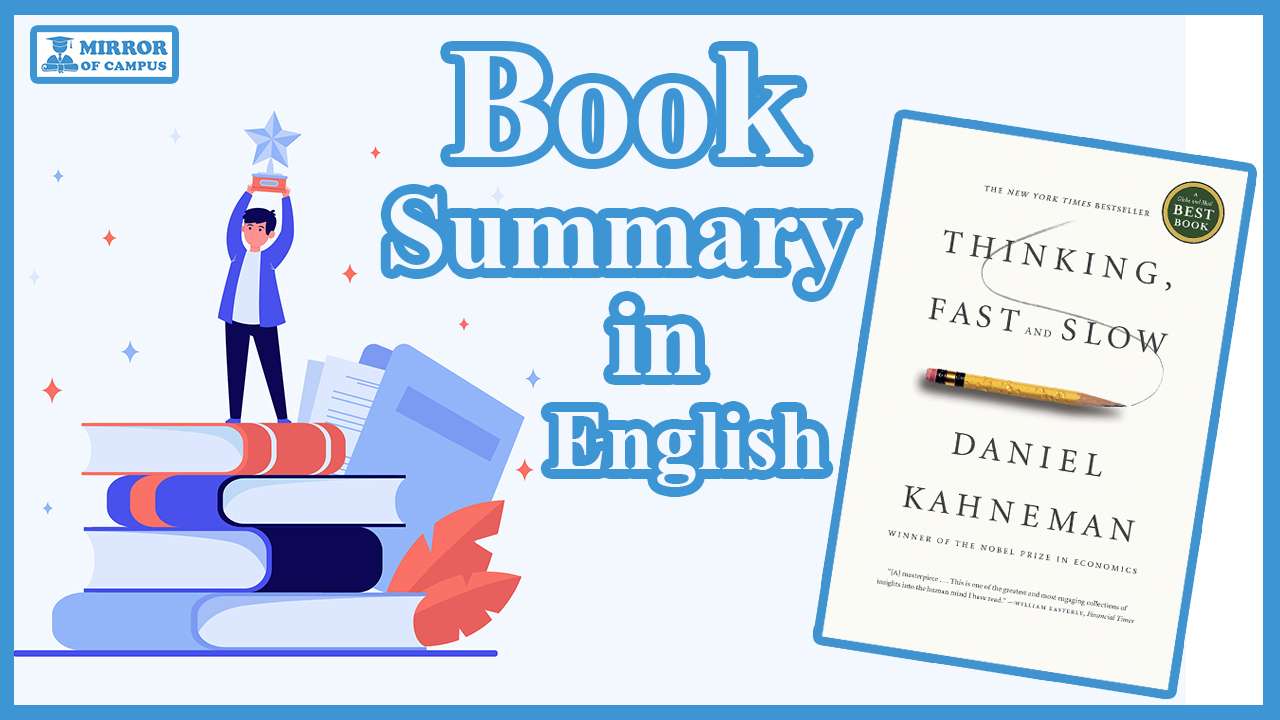Table of Contents
ToggleIntroduction to Thinking, Fast and Slow by Daniel Kahneman
Thinking, Fast and Slow is a ground-breaking book written by Nobel laureate Daniel Kahneman. In this book, Kahneman explores the two systems of thinking that drive our decision making processes. He delves into the cognitive biases and errors that can occur when we rely too heavily on one system over the other. Understanding these two systems and how they interact is crucial for making better decisions in all aspects of life.
The importance of understanding the two systems of thinking cannot be overstated. Our decision making processes are influenced by a multitude of factors, including our emotions, biases, and cognitive limitations. By understanding the two systems of thinking, we can become more aware of these influences and make more informed decisions.
The Two Systems of Thinking
System 1 thinking is fast, intuitive, and automatic. It operates effortlessly and without conscious effort. This system is responsible for our quick judgments and snap decisions. It relies on heuristics and mental shortcuts to make sense of the world around us. System 1 thinking is essential for survival and allows us to navigate our daily lives without becoming overwhelmed by every decision we make.
On the other hand, System 2 thinking is slow, deliberate, and analytical. It requires conscious effort and attention. This system is responsible for our logical reasoning and problem-solving abilities. System 2 thinking is necessary for complex tasks that require careful consideration and evaluation of information.

System 1: Fast Thinking
System 1 thinking is characterized by its speed and efficiency. It allows us to make split-second decisions without having to consciously think through every detail. However, this speed comes at a cost. System 1 thinking is prone to biases and errors that can lead to poor decision making.
One common bias associated with System 1 thinking is the availability bias. This bias occurs when we rely on easily accessible information to make judgments or decisions. For example, if we hear about a plane crash on the news, we may become more fearful of flying, even though statistically, flying is much safer than driving.
Another bias associated with System 1 thinking is the confirmation bias. This bias occurs when we seek out information that confirms our pre-existing beliefs and ignore or dismiss information that contradicts them. This can lead to a narrow-minded and biased view of the world.
System 2: Slow Thinking
System 2 thinking is characterized by its deliberate and analytical nature. It allows us to carefully consider information and make rational decisions. Unlike System 1 thinking, System 2 thinking is not prone to biases and errors. However, it requires conscious effort and can be mentally taxing.
One of the benefits of System 2 thinking is its ability to override the biases and errors of System 1 thinking. By engaging in slow thinking, we can critically evaluate information and make more informed decisions. This is particularly important in situations that require careful consideration, such as financial planning or complex problem-solving.

The Role of Emotions in Decision Making
Emotions play a significant role in our decision making processes. They can influence our judgments, biases, and even our memory of past events. Emotions can cloud our judgment and lead to irrational decision making.
For example, the fear of loss can lead us to make irrational investment decisions. We may be more willing to take risks to avoid losses than to achieve gains, even if the potential gains outweigh the potential losses.
Similarly, the influence of emotions can lead to biases in decision making. For example, the affect heuristic occurs when we rely on our emotions to make judgments or decisions. If something feels good, we may assume it is good, even if there is no logical basis for this belief.
The Illusion of Understanding
One of the cognitive limitations that Kahneman explores in his book is the illusion of understanding. This occurs when we overestimate our understanding of a situation or concept. We may believe that we have a complete understanding of a topic, when in reality, our knowledge is limited or flawed.
The illusion of understanding can be dangerous because it can lead us to overestimate our knowledge and abilities. This overconfidence can cause us to make decisions based on incomplete or inaccurate information, which can lead to negative outcomes. In the case of the stock market, believing that we understand it may cause us to ignore warning signs or fail to diversify our investments, which can result in significant financial losses. Additionally, the illusion of understanding can make us resistant to feedback or new information that challenges our beliefs, which can further exacerbate our errors in judgment. Therefore, it is important to recognize the limitations of our knowledge and seek out diverse perspectives and information before making important decisions.

The Power of Framing
The way a problem is presented can significantly influence our thinking and decision making. This is known as framing. The framing effect occurs when the same information is presented in different ways, leading to different judgments or decisions.
This phenomenon is known as the framing effect, and it highlights the importance of how information is presented to us. The way information is framed can have a significant impact on our attitudes and behaviors. In the case of the 90% fat-free product, the positive framing of the information makes it more appealing to us because it emphasizes the absence of fat rather than the presence of it. This framing can lead us to believe that the product is healthier than it actually is, which can influence our decision to purchase it. The framing effect can be seen in many different contexts, from advertising and marketing to politics and public policy. It is important to be aware of this effect and to critically evaluate information presented to us in order to make informed decisions.
The Influence of Anchoring
Our initial impressions or reference points can have a significant impact on our thinking and decision making. This is known as anchoring. The anchoring effect occurs when we rely too heavily on the first piece of information we encounter when making judgments or decisions.
This phenomenon is known as anchoring bias, where our initial perception or information influences our subsequent judgments or decisions. Anchoring bias can occur in various situations, such as negotiations, pricing, and even medical diagnoses. It can lead to inaccurate estimations, missed opportunities, and poor decision-making. To avoid anchoring bias, it is important to question and verify the validity of the initial information and consider alternative perspectives and sources of information. Additionally, using objective criteria and data-driven approaches can help reduce the influence of subjective biases.

The Importance of Self-Control
Self-control plays a crucial role in decision making. It allows us to resist immediate gratification and make choices that align with our long-term goals. Lack of self-control can lead to impulsive decision making and poor judgment.
When we lack self-control, we may find it difficult to resist the urge to indulge in unhealthy food or make impulsive purchases. This can lead to a range of negative consequences for our health and financial well-being. In terms of our health, consuming unhealthy food regularly can lead to weight gain, high blood pressure, and other health problems. Additionally, impulsive purchases can put a strain on our finances, leading to debt and financial stress. Over time, these negative consequences can compound and have a significant impact on our overall quality of life. Therefore, it is important to develop self-control skills to help us make better decisions and improve our health and financial well-being.

Conclusion and Key Takeaways from Thinking, Fast and Slow
In conclusion, Thinking, Fast and Slow by Daniel Kahneman provides valuable insights into the two systems of thinking that drive our decision making processes. By understanding the characteristics, biases, and limitations of System 1 and System 2 thinking, we can become more aware of the factors that influence our decisions.
Key takeaways from the book include the importance of engaging in slow thinking to override the biases and errors of fast thinking, the role of emotions in decision making, the illusion of understanding, the power of framing and anchoring, and the importance of self-control.
By applying these insights to our decision making processes, we can make more informed and rational choices that align with our goals and values.
Our Other Platforms







